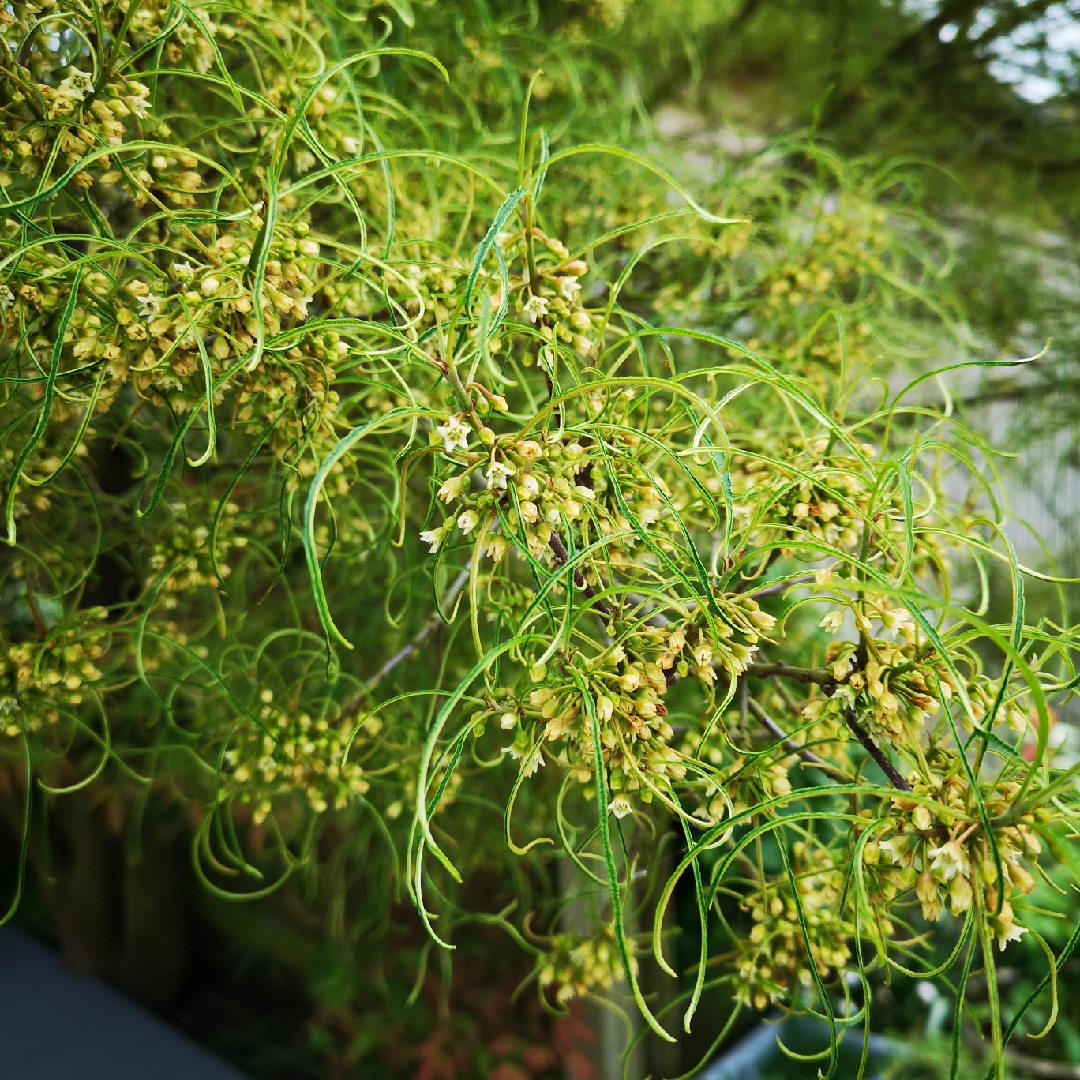
Frangula alnus 'Asplenifolia' syn. Rhamnus frangula 'Asplenifolia'
Fern leaved Buckthorn
Rhamnus can be deciduous or evergreen, often thorny, shrubs or trees. They have simple leaves, and small flowers that are followed by fruit that is usually black. that turn black. CAUTION: All parts of the plant may cause severe discomfort if ingested. 'Asplenifolia' is a bushy, deciduous, slow-growing shrub. It has finely textured leaves that turn gold-yellow in Autumn. It bears clusters of green flowers that are attractive to bees, which are followed by small red fruit that ripen to black in Autumn. Can be used as hedging. It provides lovely texture, even in a smaller garden.
Contributed by @faygirl53
-
Full sun to partial shade
-
Occasional watering
-
Full Frost Hardy: 5F (-15°C)
-
Free draining and fertile
Common name
Fern leaved Buckthorn
Latin name
Frangula alnus 'Asplenifolia' syn. Rhamnus frangula 'Asplenifolia'
type
Trees or Shrubs
family
Rhamnaceae
ph
5.5 - 8.5 Acid - Neutral
Plant & bloom calendar
-
Best time to plant
-
When the plant will bloom
full grown dimensions
 4.00 M
4.00 M
4.00 M
4.00 M
Frangula alnus 'Asplenifolia' syn. Rhamnus frangula 'Asplenifolia'
Rhamnus can be deciduous or evergreen, often thorny, shrubs or trees. They have simple leaves, and small flowers that are followed by fruit that is usually black. that turn black. CAUTION: All parts of the plant may cause severe discomfort if ingested. 'Asplenifolia' is a bushy, deciduous, slow-growing shrub. It has finely textured leaves that turn gold-yellow in Autumn. It bears clusters of green flowers that are attractive to bees, which are followed by small red fruit that ripen to black in Autumn. Can be used as hedging. It provides lovely texture, even in a smaller garden.
Flowering
From Mid Spring TO Late Spring
Rather insignificant, very small yellow flowers appear in mid to late Spring
Planting
From Early Spring TO Late Spring
Plant in free-draining fertile soil in a sunny, or partially sunny position, sheltered from cold winds. This plant is useful for coastal situations.
Propagating by semi-ripe cuttings
From Mid Summer TO Late Summer
Take semi- ripe cuttings from this season's growth in Summer. Cut neatly, just below a leaf node, a 5" approx. piece of a healthy shoot that has soft growth at the tip. pinch out the growing tip, and cut off the bottom leaves. Dip the bottom of the cutting in hormone rooting powder, and carefully place in a pot of cutting compost with the leaves just above the level of the compost. Water, label, cover with a polythene bag, and place in a warm, bright place, out of direct sunlight. Take the polythene bag off periodically for a while for ventilation (at least twice a week)








